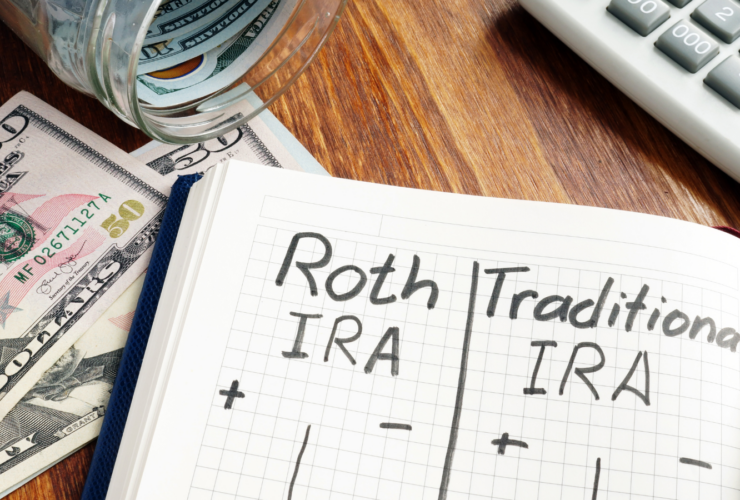Best Passive Income Side Hustles to Explore This Year
Your 9-5 job isn’t the only way you can make money and build wealth. And we’re not talking about taking on a 5-9. Passive income side hustles are a great way to earn money outside of your day job. Let’s take a closer look at what passive income is, which different passive income side hustles you should consider, and the difference between passive and active investing.
What is passive income?
Passive income is income that doesn’t come from an employer or regular 9-5 job. It’s the opposite of active income and is a regular cash flow that requires very little effort to maintain.
Contrary to popular belief, passive income is not working a part-time job in addition to your full-time gig. It’s also not considered ‘easy’ money. While passive income streams take little effort to maintain, they can require extensive time and skill to get going. But once you make that initial investment, you can reap the rewards of that passive income stream for years to come.
6 Passive Income Side Hustles To Consider
Who doesn’t want to earn extra income without working a second job? Here are 6 different types of passive income streams for you to consider based on your interests, skills, and financial goals.
1. Real Estate and Rental Properties
Investing in real estate can be a great way to build passive income if you have the upfront capital. Short and long-term rentals can provide a steady stream of income, especially if your properties are located in high-tourist areas.
2. High-Yield Savings Accounts
One of the easiest ways to earn passive income is to open up a high-yield savings account. High-yield savings accounts pay 20-25 times higher than the average savings or checking accounts. The national average APY is about .06%, while APY of high-yield savings accounts see upwards of 5.5%. Some of the best-performing high-yield savings accounts include Ally Bank, Ever Bank, and SoFi Checking and Savings.
Note: You have to pay taxes on the interest you earn in a high-yield savings account. But it ends up being worth it!
3. Invest In Alternative Investments
Alternative investments are not traditional investments such as stocks, bonds, or cash. They are diverse investments that can vary greatly in accessibility and structure. Some examples include hedge funds, natural resources, tangible assets like collectibles, and what we do here at Hedgehog Investments.
4. Dividend Stocks
Dividend stocks distribute part of the company’s earnings to shareholders (you!) on a regular basis. The best dividend stocks are shares of well-established companies that increase investor payouts over time, which can help you grow your income faster. You can also reinvest dividends if you don’t need the income immediately to expand that growth even further.
5. Affiliate Marketing
Affiliate marketing is a great way to earn passive income. How it works is that you receive a code or link from a company to promote their products. You then earn a commission for any sales made using your affiliate link.
You can promote your affiliate links or codes on social media, blog posts, or emails. Anywhere you can hyperlink, you can use your affiliate information! However, you have to disclose any affiliate links you use because you’re being paid to make the product recommendation. It’s illegal not to include a disclosure, so be sure to notify your customers or audience beforehand.
6. Real Estate Investment Trusts (REITs)
A Real Estate Investment Trust (REIT) is a publicly traded company that owns, operates, and/or finances real estate properties that generate income. With a REIT, you have the opportunity to invest in real estate without needing to purchase or manage the properties directly.
Passive Versus Active Investing: What’s the Difference?
Just like passive and active income, there is also passive and active investing. So what’s the difference?
An active investor is someone who purchases stocks or other investments regularly. They diligently search for and buy investments to diversify their portfolio. It requires a hands-on approach and often the assistance of a professional who can actively manage the investments.
A passive investor is the opposite. They don’t buy and sell individual stocks and investments often, rather, they hold onto an investment over a long period of time.
However, even if you purchase investments often, the investment itself is active or passive, depending on what it needs from its investors. Real estate can be active or passive, even with a similar purchase cadence, depending on how active the investment needs the investor to be.
For instance, you can purchase Hedgehog contracts every week if you want to, which is rather active, but our investment is passive because we don’t require anything from our investors other than that.
Harness the power of alternative investments with Hedgehog
Passive income is a great way to speed up the trajectory of your investment and financial goals, and it’s nice to have some extra cash on hand. If you’re interested in making alternative investments part of your passive income strategy, learn more about our model at Hedgehog Investments.
If you have any questions, get in touch with our team here.
Disclaimer:
This material is intended for informational purposes only and should not be construed as legal or tax advice. Information here is not intended to replace the advice of your investment advisor or financial advisor. This information is not an offer or a solicitation to buy or sell securities. This information may have been compiled from third-party sources and is believed to be reliable. All investing involves risk, including the loss of principal.




